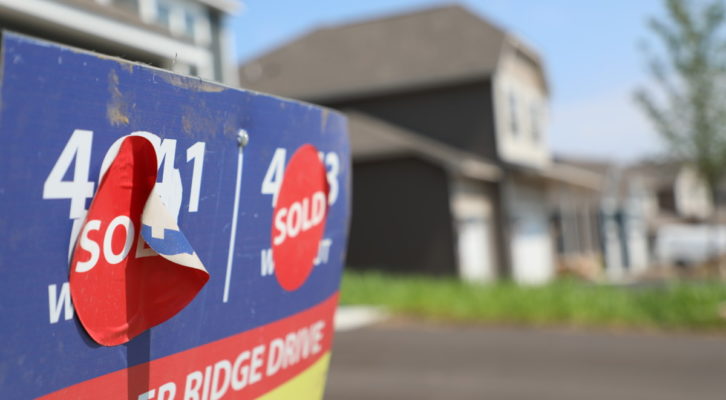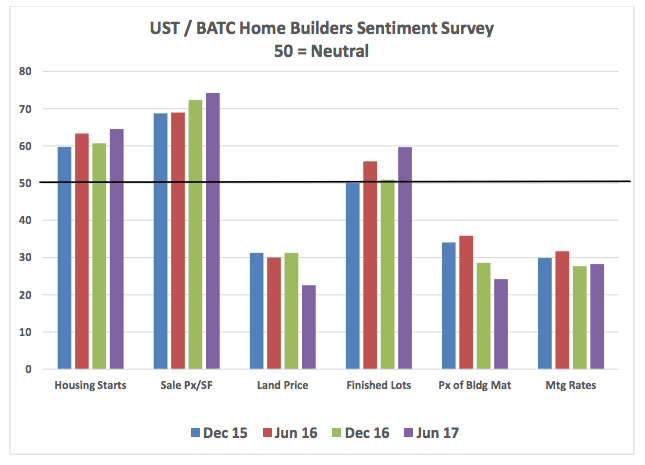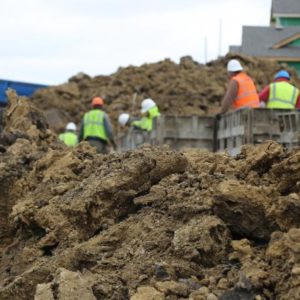St. Thomas’ fifth semiannual survey of 30 industry leaders measures sentiment and is designed to be a forecasting tool.
Leaders in the Twin Cities single-family home-construction industry are generally optimistic about market conditions for the coming year although they have concerns about increasing mortgage rates and higher costs of land and building materials.
That’s according to a new survey conducted by the University of St. Thomas Shenehon Center for Real Estate in partnership with BATC-Housing First Minnesota.
“The industry leaders we poll every six months are actively engaged in studying both the demand and supply side of the housing market,” said Herb Tousley, director of real estate programs at the university. “Since they are involved in creating new housing units and adjusting supply-to-demand conditions, these individuals are close to the actual changes taking place in the market.”
The survey shows that Twin Cities builders are slightly optimistic about housing starts, lost availability, and sale price per square foot, while increasingly concerned about land prices, building material costs and mortgage rates.
“These results align closely with what we are hearing from the market and our members.” Said David Siegel, Executive Director of BATC Housing First Minnesota. “While there is a great need for residential construction in the Twin Cities, there are still several factors holding it back including land prices, the regulatory burden and a shortage of labor.”
The Twin Cities Home Builders Survey is patterned after St. Thomas’ Minnesota Commercial Real Estate Survey that began in 2010. The Home Builders Survey polls the same panel of 35 industry leaders semiannually in spring and again the following fall about their expectations for the upcoming year in six key areas of the housing market.
These experts are asked to assign a number of zero to 100 for each of the six questions. A midpoint score of 50 is neutral; scores higher than 50 indicate a more favorable outlook and scores lower than 50 indicate a more pessimistic outlook.
Here are the scores for each of the six questions that were asked in the most recent survey:
Housing Starts: 57 This score decreased from 65 in our previous survey to 57, it indicates an expectation that the number of single-family housing starts will begin to slow down in the next 12 months. While still optimistic, home builders are concerned about the impact of rising interest rates and the rapidly increasing cost of building materials.
Square-foot sale price: 70 This score is still very optimistic, however the drop from 74 to 70 reflects the expectation that the rate of increase will begin to moderate in the next 12 months. It shows the panel’s expectations that home prices will continue to increase at a slightly lower rate. At that level there is a continued belief that sale prices will increase at a rate that will more than offset the expected increases in project costs.
Land prices: 33 While still well into pessimistic territory at 33 this index has increased sharply from our last survey’s score of 23. This could be an indication of our panel’s expectation that the rate of the increase in land prices will moderate. It will be interesting to look at future surveys to see how this plays out. While there may be enough finished lots available, the higher land prices will continue to squeeze profitability.
Availability of finished lots: 53 This index decreased from 60 last December to 53 in our current survey reflecting the panel’s increased concern that there will be an adequate supply of finished lots in 2019. An adequate supply of well-located finished lots is crucial to the health of the home building industry.
Cost of building materials: 31 The outlook for the expected increases in the costs of building materials continues to be a major concern. This index moved from 24 in December 2017 to a slightly less pessimistic score of 31 in current survey. This score is an indication of ongoing concerns by our panelists that much of the gain from increased sale prices and more building starts will be offset by higher costs. These expected increases in costs could depress profitability and could reduce the number of new homes built in 2019.
Mortgage rates: 27 This index has declined slightly to 27 compared to 28 in our last survey. Although interest rates have been rising in 2018 the indication is that the panel continues to expect mortgage rates to increase in the next 12 months. Most panelists are expecting an additional increase of ¼% to ½% within the next year. The affordability issues created by higher rates could put a damper on home-building activity.
More Information Additional details can be found on the Shenehon Center’s website.
















